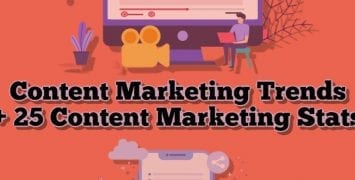Your website is up and running. Your e-commerce site is connecting with potential customers and brand awareness is on the rise. You’re seeing an increase in conversions and sales.
This all great news! You’ve already completed a ton of work and set yourself up for success. But are you reaching as many potential customers as possible?
When your site is generating some sales, but maybe not as many as you’d like, that’s when it’s time for Conversion Optimization. This a way to fine-tune your approach and create marketing strategies which engage with potential customers in the most effective way possible.
Here’s your Complete Guide to Conversion Optimization:
Conversion Optimization is primarily centered on A/B testing. Also called split testing, this when you simultaneously publish two pieces of content which have minor differences.
These could be two different design styles, topic emphasis or something else entirely. We’ll discuss the specifics later on. For right now, the main takeaway is that you publish an A version and a B version. Then you compare the results to see which version is preferred by your target audience.
You might be comparing two very small changes, such as the style and location of your call-to-action button. But these small changes can lead to big effects.
Check out this story from the Director of Analytics of Obama’s 2008 campaign. He details how A/B testing raised an additional $60 million in fundraising.
Your brand probably isn’t as big or complicated as a presidential campaign. But A/B testing is a proven way to take a brand which is performing well and turning it into a campaign which is performing at the absolute highest level.
A/B Testing for Page Layout
“Above the Fold” is a term which originates from the newspaper industry. When a paper is folded, the top half is the only real estate visible to the reader. This where you’ll find the most important info.
The same idea applies to your landing pages. You want the reader to see the most important stuff right when they arrive without having to scroll down. Here’s what you want to put above the virtual fold:
- A catchy headline offering the promise of a solution to your reader’s problem
- A supporting headline providing more detail
- Consistent brand imaging across all your design and messaging
Basically, you want an overview of what the page is all about. Now, you might have heard to put a Call to Action above the fold. While this used to be the standard way of doing things, it’s not necessarily the case these days.
Studies have shown that web users are very comfortable with scrolling. So they’ll easily scroll down to a Call to Action button. I like putting the CTA near the bottom of the page. People who scroll down not only get to see additional content about your brand, they’ve also shown that they’re a bit more invested in your brand than non-scrollers.
Mobile has further reduced the need to pay a ton of attention to above the fold. Mobile users are used to scrolling all over a site, and this usually presents no problems as long as the site is designed with mobile in mind.
A/B Testing for Design
You’ll also want to use A/B testing to determine the most appealing design for your audience. Do they like bright colors? Lots of graphics or a more minimal design?
A/B Testing for Content
Here’s where you can test out different approaches to your on-page copy. There are countless approaches to content. You’ll have to learn about your audience, what their problems are and how they hope your product will solve those problems.
Generally speaking, there are two approaches to content: An appeal to emotions and an appeal to reason. You might want to emphasize how your potential customer will feel after using your product and how easy their lives will be.
An appeal to reason tells your potential customers how well your product works, why it’s the best option on the market and more.
How Long Should You Run A/B Testing?
Conversion optimization is a long-term project. You’ll run each test for several weeks. Don’t expect to see massive results after each test, either. A five percent change in either direction is going to be pretty normal.
That’s all fine. You’re still drawing in customers with both A and B tests. Don’t think of A/B testing as choosing between one way which works and another which doesn’t. Think of it as gradually refining your marketing campaign while you learn more and more about your potential customers.
Don’t leave your marketing decisions up to chance. Use Conversion Optimization to always stay on the right path necessary to connect and engage with your customers.




